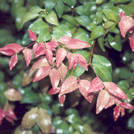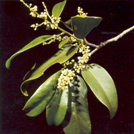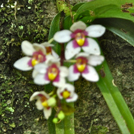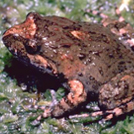
“Containing the most important and significant habitats where threatened species of plants and animals of outstanding universal value1 from the point of view of science and conservation still survive.” The current prognosis for these threatened species is not good. The conservation status of an overwhelming proportion of the species (80 per cent or more) occurring at Springbrook has either deteriorated or shown no improvement over the past 18 years since listing in 1994. The most significant factor affecting this prognosis is the availability of sufficient viable critical habitat. Critical habitat continues to decline, despite the obligation under the World Heritage Convention for each State Party (the Australian Government) to do the utmost within its powers to ensure the identification, protection, conservation, presentation and transmission to future generations of the natural heritage within its territory. The ‘integrity’ criterion for successful listing required the inclusion and protection of the most critical habitats essential to ensure survival of viable populations of the identified species. The Springbrook Rescue initiative is an important contribution to restoring critical habitat of species that contribute to the values and integrity of the Gondwana Rainforests of Australia World Heritage Area (Project SS1). As an important component of the project, autonomous audio-recording systems are deployed at a range of sites for detecting the presence and, potentially, reproductive success of key indicator species in both reference and recovery sites. Currently 100 species of plants and animals occurring at Springbrook are formally listed as threatened, near threatened and, from ARCS point of view, as of special concern because of immense phylogenetic distinctness and significance, albeit not officially considered threatened (e.g. the Echidna):
More details are provided on threatened flora and threatened fauna in the linked pages.
Plant population Trends Overall, almost 80 per cent of plant species recorded as rare and/or threatened at the time of listing in 1994 that also occur at Springbrook are declining or show no improvement in their conservation status over the past 18 years. The conservation status in Queensland of 11 species that occur in the Springbrook precinct has deteriorated since the time of Listing in 1994 (i.e. 16.2 per cent of species recognised as threatened at the time). Forty-three species (63.2 per cent) have shown no improvement in conservation status over the past 18 years compared with five species that have shown an improvement in conservation status. Only seven species listed in 1994 as endangered, vulnerable or uncertain (“K”) have improved their status to the next level of either vulnerable or “near threatened, NT”. Eight species that were listed as rare in 1994 have been reassigned a conservation status of “no concern”. All however remain rare species, many of great phylogenetic interest. The Gondwanan rosid family Picrodendracese (Greek picro bitter, dendron tree, referring to bitter fruits) in the Malpighiales order is a small family of only 94 species in 25 small genera restricted to subtropical and tropical regions of the southern hemisphere including Australia, New Caledonia, New Guinea and Madagascar. Many of the genera are monotypic (40 per cent of genera) or ditypic (16 per cent) relicts, and most species are endemic in Australia, New Caledonia or Madagascar. One of the component clades within the Picrodendraceae (which included Austrobuxus) is centred on Australia. Austrobuxus was recently identified in the late Eocene (35 Ma) deposits in New Zealand and earlier in the Late Paleocene (55.5 Ma) in Australia. Recent studies (Davis et al. 2005) implicate the explosive radiation of the Malpighiales in the Mid-Cretaceous with origin of modern tropical(/subtropical) rainforests. Relict taxa, such as Austrobuxus, within this order are thus of strong evolutionary significance requiring continuing monitoring for ensuring adequate long-term protection. A significant number of additional species (10 species in seven families) have subsequently been recognised as occurring in the area and which are rated as threatened with extinction. There are no data to indicate the reasons for these changes, e.g. better information or changes in threat levels. Notwithstanding the reasons, increasing the area of National Park and consequently the World Heritage Area should have beneficial effects in the long term. Animal population Trends Eighty-five per cent of animal species recorded in 1994 as rare and/or threatened that also occur at Springbrook are declining or have shown no improvement in their conservation status over the past 18 years. A declining status is recorded for 57.5 per cent of species. No improvement is observable for 27.5 per cent of species. Only 15 per cent of species are recorded as no longer threatened. Table I: Change in conservation status of species associated with the Gondwana Rainforests of Australia World Heritage Area after 18 years since the original listing in 1994.
Three codes were used for conservation status in 1994 as part of the ROTAP System (plantnet.rbgsyd.nsw.gov.au/cgi-bin/NSWfl.pl?page=nswfl&lvl=sp&name=Trichosanthes~subvelutina): Table II: Changes in conservation status and population trends of animal species associated with the Gondwana Rainforests of Australia World Heritage Area after 18 years since original listing.
a Under consideration or review (submitted for Erythrotriorchis radiatus in 2005 by Baker-Gabb, DJ) The current threatened status of plants and animals is based on official websites: New South Wales (www.environment.nsw.gov.au/threatenedSpeciesApp); Australia (www.environment.gov.au/biodiversity/threatened/species.html); and internationally based on the IUCN Red List of Threatened Species, Version 2012.2 (www.iucnredlist.org/search); all were last accessed on 02/02/2013. |
|||||||||||||||||||||||||||||||||||||||||||||||||||||||||||||||||||||||||||||||||||||||||||||||||||||||||||||||||||||||||||||||||||||||||||||||||||||||||||||||||||||||||||||||||||||||||||||||||||||||||||||||||||||||||||||||||||||||||||||||||||||||||||||||||||||||||||||||||||||||||||||||||||||||||||||||||||||||||||||||||||||||||||||||||||||||||||||||||||||||||||||||||||||||||||||||||||||||||||||||||||||||||||||||||||||||||||||||||||||||||||||||||||||||||||||||||||||||||||||||||||||||||||||||||||||||||||||||||||||||||||||||||||||||||||||||||||||||||||||||||||||||||||||||||||||||||||||||||||||||||||||||||||||||||||||||||||||||||||||||||||||||||||||||||||||||||||||||||||||||||||||||||||||||||||||||||||||||||||||||||||||||||||||||||||||||||||||||||||||||||||||||||||||||||||||||||||||||||||||||||||||||||||||||||||||||||||||||||||||||||||||||||||||||||||||||||||||||||||||||||||||||||||||||||||||||||||||||||||||||||||||||||||||||||||||||||||||||||||||||||||||||||||||||||||||||||||||||||||||||
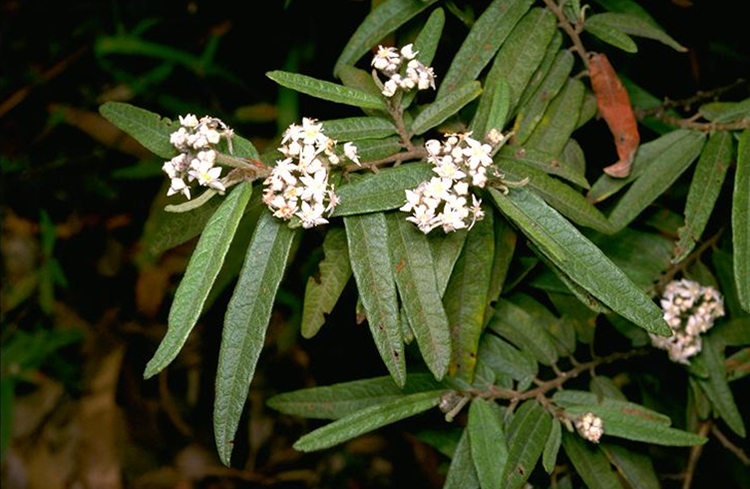 Rulingia salviifolia (Malvaceae). The taxonomy of this group is in a state of flux. However its conservation status has not improved over the past 18 years. Photo: obtained from the “Maroochy Botanic Gardens” website if the Friends of Maroochy Regional Bushland Botanic Gardens Inc. www.friendsofmaroochybotanicgardens.org.au/sculpturegardenplants.htm |
|||||||||||||||||||||||||||||||||||||||||||||||||||||||||||||||||||||||||||||||||||||||||||||||||||||||||||||||||||||||||||||||||||||||||||||||||||||||||||||||||||||||||||||||||||||||||||||||||||||||||||||||||||||||||||||||||||||||||||||||||||||||||||||||||||||||||||||||||||||||||||||||||||||||||||||||||||||||||||||||||||||||||||||||||||||||||||||||||||||||||||||||||||||||||||||||||||||||||||||||||||||||||||||||||||||||||||||||||||||||||||||||||||||||||||||||||||||||||||||||||||||||||||||||||||||||||||||||||||||||||||||||||||||||||||||||||||||||||||||||||||||||||||||||||||||||||||||||||||||||||||||||||||||||||||||||||||||||||||||||||||||||||||||||||||||||||||||||||||||||||||||||||||||||||||||||||||||||||||||||||||||||||||||||||||||||||||||||||||||||||||||||||||||||||||||||||||||||||||||||||||||||||||||||||||||||||||||||||||||||||||||||||||||||||||||||||||||||||||||||||||||||||||||||||||||||||||||||||||||||||||||||||||||||||||||||||||||||||||||||||||||||||||||||||||||||||||||||||||||||
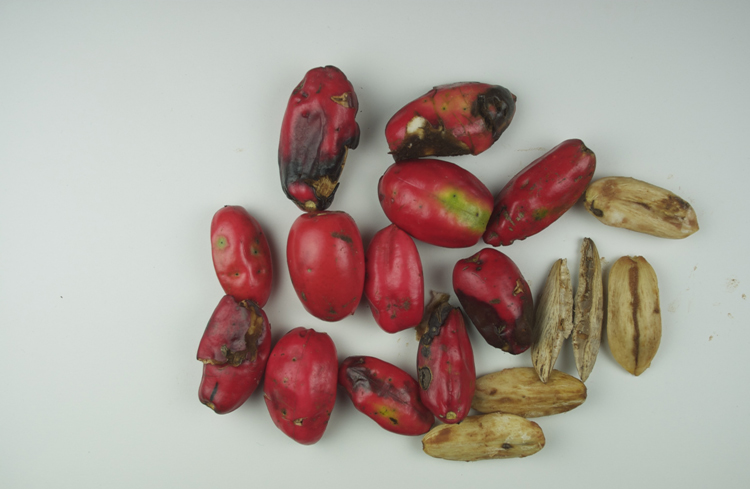 Ochrosia moorei is one of the most endangered plants in Australia. The population size in Queensland is likely not to exceed 20 individual plants in the wild. Many of the localities in north-east New South Wales contain a single individual, the total population there being likely to be less than 50 individuals in the wild. Photo Aila Keto |
|||||||||||||||||||||||||||||||||||||||||||||||||||||||||||||||||||||||||||||||||||||||||||||||||||||||||||||||||||||||||||||||||||||||||||||||||||||||||||||||||||||||||||||||||||||||||||||||||||||||||||||||||||||||||||||||||||||||||||||||||||||||||||||||||||||||||||||||||||||||||||||||||||||||||||||||||||||||||||||||||||||||||||||||||||||||||||||||||||||||||||||||||||||||||||||||||||||||||||||||||||||||||||||||||||||||||||||||||||||||||||||||||||||||||||||||||||||||||||||||||||||||||||||||||||||||||||||||||||||||||||||||||||||||||||||||||||||||||||||||||||||||||||||||||||||||||||||||||||||||||||||||||||||||||||||||||||||||||||||||||||||||||||||||||||||||||||||||||||||||||||||||||||||||||||||||||||||||||||||||||||||||||||||||||||||||||||||||||||||||||||||||||||||||||||||||||||||||||||||||||||||||||||||||||||||||||||||||||||||||||||||||||||||||||||||||||||||||||||||||||||||||||||||||||||||||||||||||||||||||||||||||||||||||||||||||||||||||||||||||||||||||||||||||||||||||||||||||||||||||
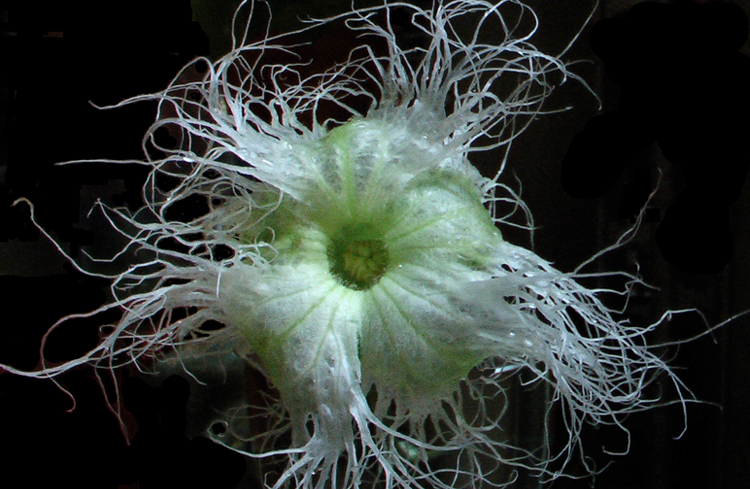 Trichosanthes subvelutina or Silky Cucumber (Cucurbitacceae) is endemic to South-east Queensland–North-east NSW and rated as rare under the ROTAP System (www.plantnet.rbgsyd.nsw.gov.au/cgi-bin/NSWfl.pl?page=nswfl&lvl=sp&name=Trichosanthes~subvelutina); it would be prudent to monitor the status of this phylogenetically significant species and other similarly significant Australian taxa such as the near-basal Corynocarpaceae and the basal Nothoalsomitra suberosa (endemic to south-east Queensland), within the Cucurbitales (one of the N-fixing clade members). Photo: supplied by Ken O’Shea. |
|||||||||||||||||||||||||||||||||||||||||||||||||||||||||||||||||||||||||||||||||||||||||||||||||||||||||||||||||||||||||||||||||||||||||||||||||||||||||||||||||||||||||||||||||||||||||||||||||||||||||||||||||||||||||||||||||||||||||||||||||||||||||||||||||||||||||||||||||||||||||||||||||||||||||||||||||||||||||||||||||||||||||||||||||||||||||||||||||||||||||||||||||||||||||||||||||||||||||||||||||||||||||||||||||||||||||||||||||||||||||||||||||||||||||||||||||||||||||||||||||||||||||||||||||||||||||||||||||||||||||||||||||||||||||||||||||||||||||||||||||||||||||||||||||||||||||||||||||||||||||||||||||||||||||||||||||||||||||||||||||||||||||||||||||||||||||||||||||||||||||||||||||||||||||||||||||||||||||||||||||||||||||||||||||||||||||||||||||||||||||||||||||||||||||||||||||||||||||||||||||||||||||||||||||||||||||||||||||||||||||||||||||||||||||||||||||||||||||||||||||||||||||||||||||||||||||||||||||||||||||||||||||||||||||||||||||||||||||||||||||||||||||||||||||||||||||||||||||||||||
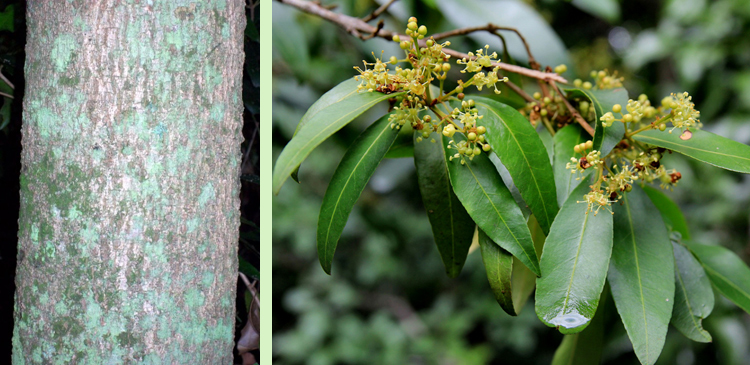 Austrobuxus swainii: Source: Wikipedia Austrobuxus swainii in flower (Image: Black Diamond Images) — link is below Austrobuxus is a member of the order Malpighiales, recently associated with the origin of modern tropical/subtropical rainforests (Davis et al. 2005). References Curtis, L.K., Dennis, A.J., McDonald, K.R., Kyne, P.M. and Debus, S.J.S., Eds. (2012) Queensland’s Threatened Animals. CSIRO Publishing. Australia. Davis, C.C., Webb, C.O., Wurdack, K.J., Jaramillo, C.A. and Donoghue, M.J. (2005). Explosive radiation of Malpighiales supports a mid-Cretaceous origin of modern tropical rain forests. American Naturalist 165(3), E36-E65. Lee, D.E., Conran, J.G., Lindqvist, J.K., Bannister, J.M. and Mildenhall, D.C. (2012). New Zealand Eocene, Oligocene and Miocene macrofossil and pollen records and modern plant distributions in the Southern Hemisphere. Botanical Reviews 78, 235-260. Wurdack, K.J. and Davis, C.C. (2009). Malpighiales phylogenetics: Gaining ground on one of the most recalcitrant clades in the angiosperm tree of life. American Journal of Botany 96(8): 15551–1570. Footnotes 1 Outstanding Universal Value: the concept has evolved over the years to presently refer to the overall value of an entire World Heritage area. Values of individual species are generally referred to as “contributing” values or “World Heritage” values. |
|||||||||||||||||||||||||||||||||||||||||||||||||||||||||||||||||||||||||||||||||||||||||||||||||||||||||||||||||||||||||||||||||||||||||||||||||||||||||||||||||||||||||||||||||||||||||||||||||||||||||||||||||||||||||||||||||||||||||||||||||||||||||||||||||||||||||||||||||||||||||||||||||||||||||||||||||||||||||||||||||||||||||||||||||||||||||||||||||||||||||||||||||||||||||||||||||||||||||||||||||||||||||||||||||||||||||||||||||||||||||||||||||||||||||||||||||||||||||||||||||||||||||||||||||||||||||||||||||||||||||||||||||||||||||||||||||||||||||||||||||||||||||||||||||||||||||||||||||||||||||||||||||||||||||||||||||||||||||||||||||||||||||||||||||||||||||||||||||||||||||||||||||||||||||||||||||||||||||||||||||||||||||||||||||||||||||||||||||||||||||||||||||||||||||||||||||||||||||||||||||||||||||||||||||||||||||||||||||||||||||||||||||||||||||||||||||||||||||||||||||||||||||||||||||||||||||||||||||||||||||||||||||||||||||||||||||||||||||||||||||||||||||||||||||||||||||||||||||||||||
